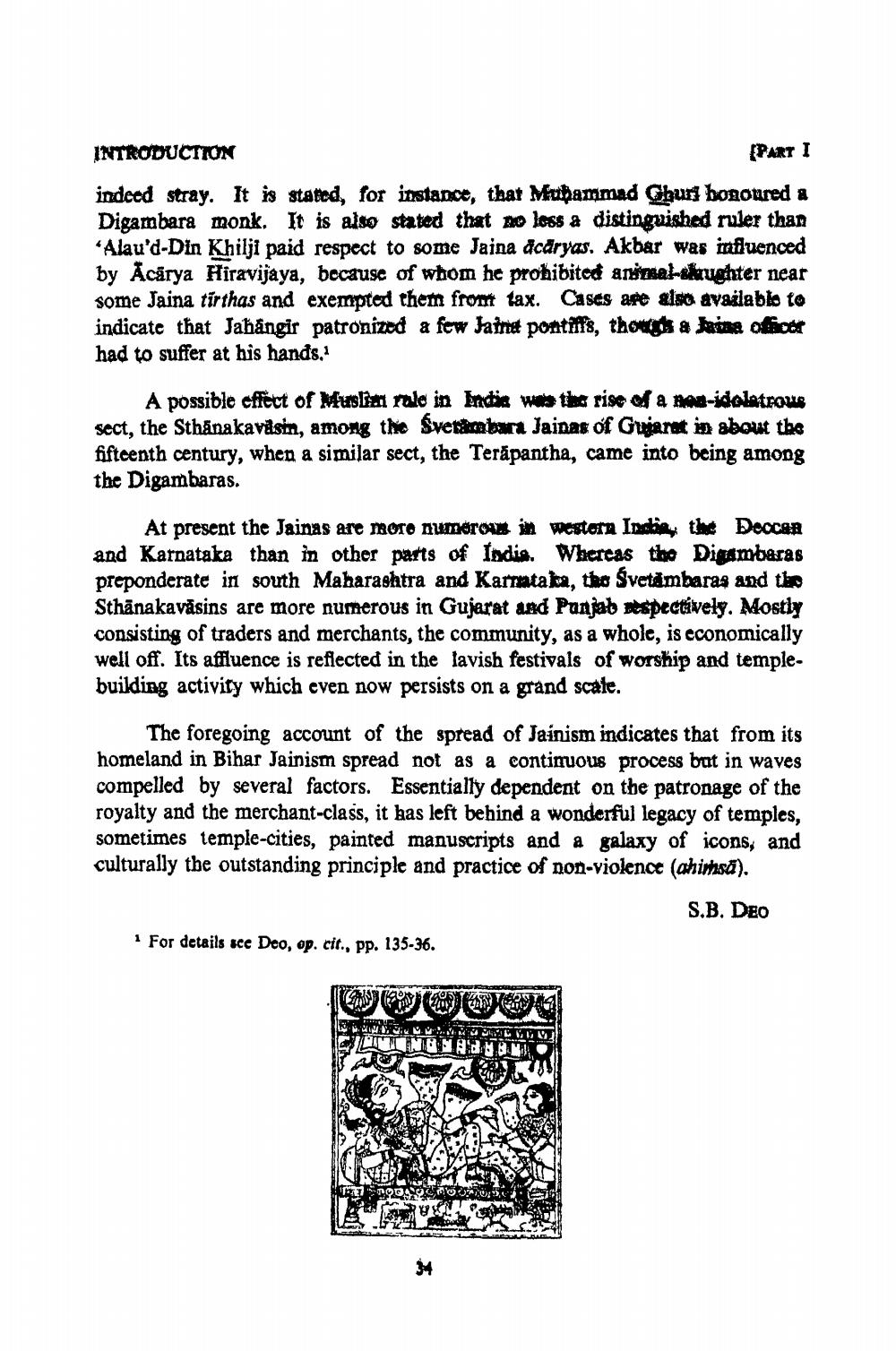________________
INTRODUCTION
[PART I
indeed stray. It is stated, for instance, that Muhammad Ghuri honoured a Digambara monk. It is also stated that no less a distinguished ruler than 'Alau'd-Din Khilji paid respect to some Jaina ācāryas. Akbar was influenced by Acarya Hiravijaya, because of whom he prohibited animal-aughter near some Jaina tirthas and exempted them from tax. Cases are also available to indicate that Jahangir patronized a few Jain pontiffs, thoug's a Jaina officer had to suffer at his hands."
A possible effect of Muslim rale in India was the rise of a non-idolatrous sect, the Sthanakavisin, among the Svetambara Jainas of Gujarat in about the fifteenth century, when a similar sect, the Terapantha, came into being among the Digambaras.
At present the Jainas are more numerous in western India, the Deccan and Karnataka than in other parts of India. Whereas the Digambaras preponderate in south Maharashtra and Karnataka, the Svetambaras and the Sthanakavāsins are more numerous in Gujarat and Punjab respectively. Mostly consisting of traders and merchants, the community, as a whole, is economically well off. Its affluence is reflected in the lavish festivals of worship and templebuilding activity which even now persists on a grand scale.
The foregoing account of the spread of Jainism indicates that from its homeland in Bihar Jainism spread not as a continuous process but in waves compelled by several factors. Essentially dependent on the patronage of the royalty and the merchant-class, it has left behind a wonderful legacy of temples, sometimes temple-cities, painted manuscripts and a galaxy of icons, and culturally the outstanding principle and practice of non-violence (ahimsa).
S.B. DEO
1 For details see Deo, op. cit., pp. 135-36.




